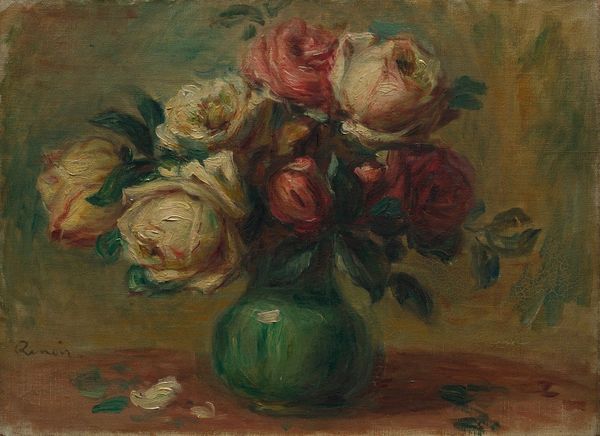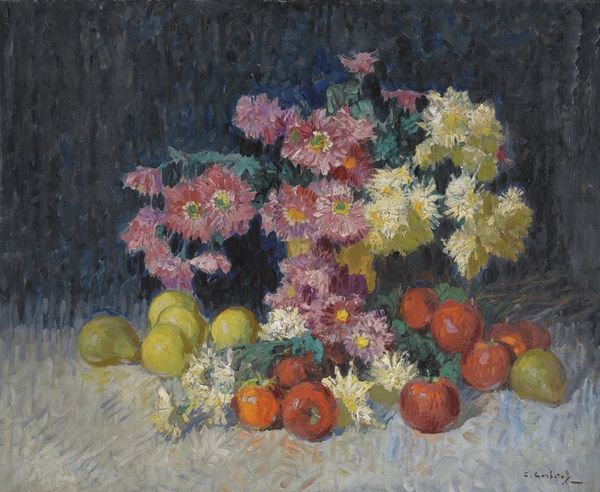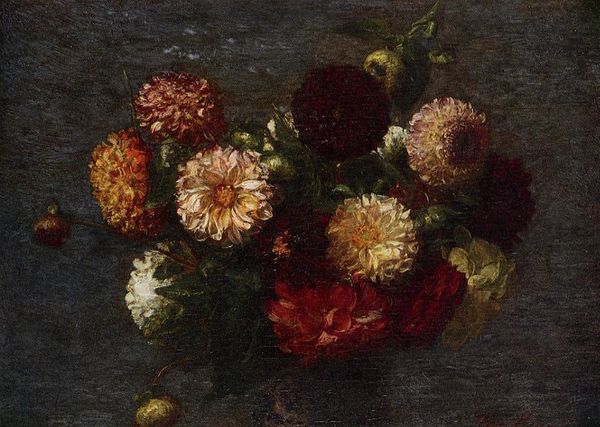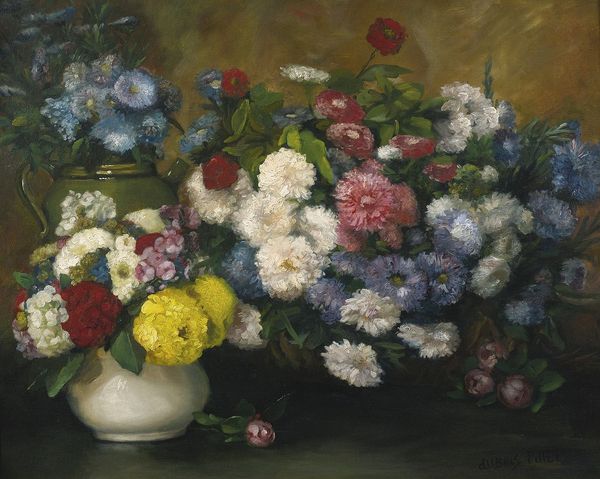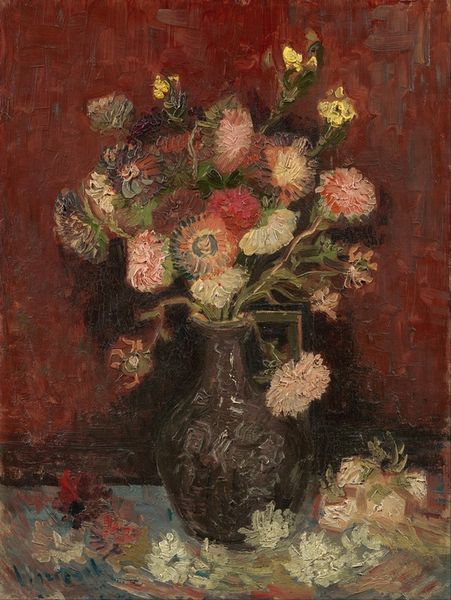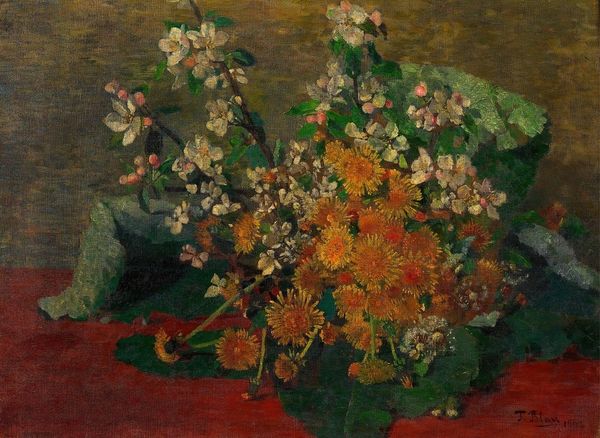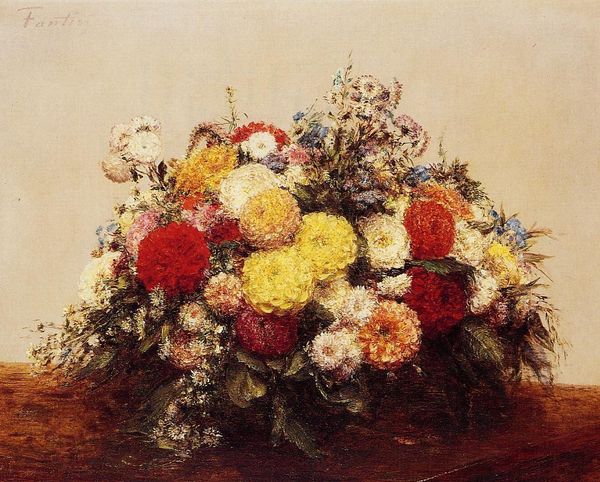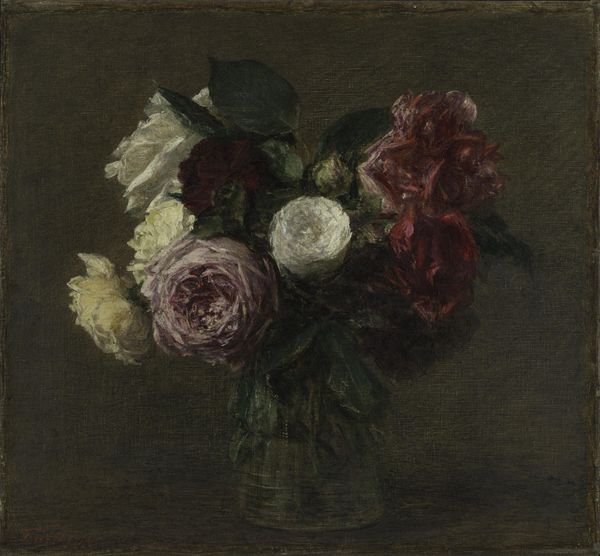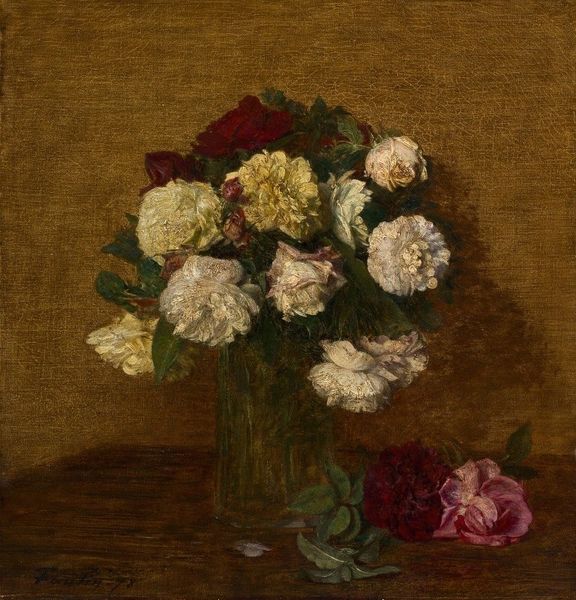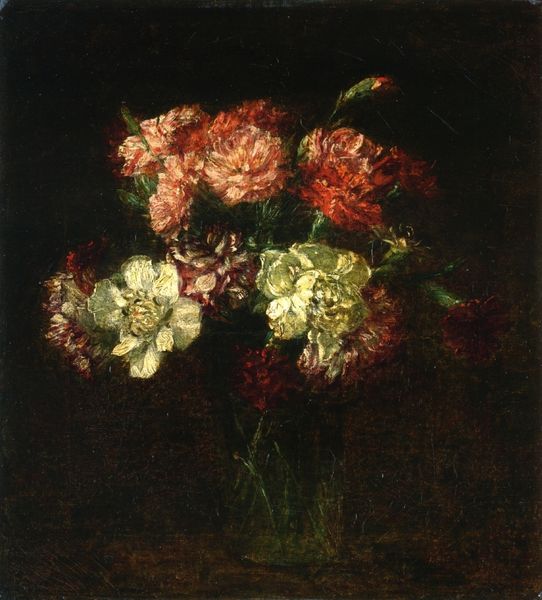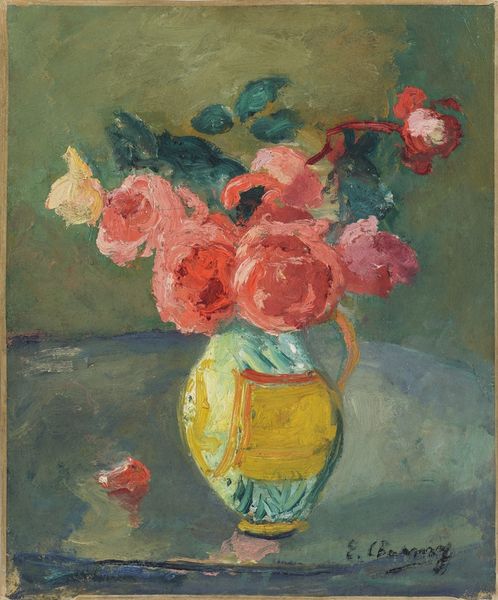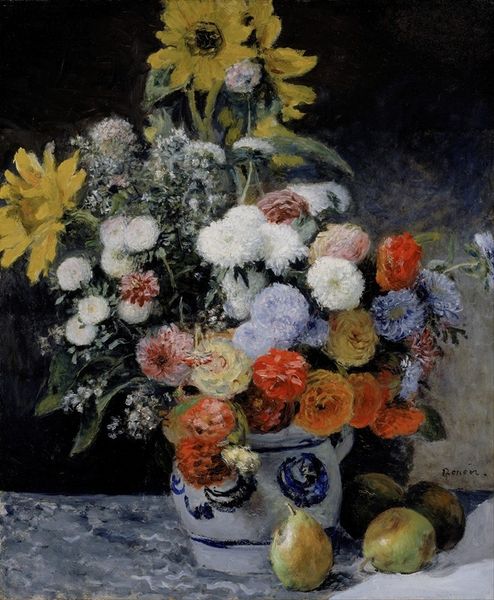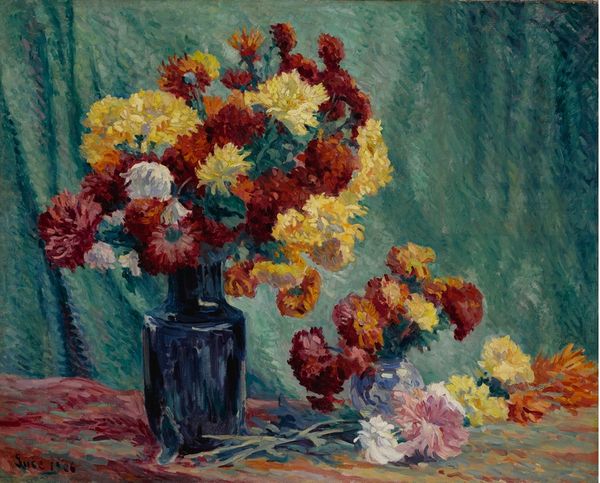
oil-paint, impasto
#
oil-paint
#
oil painting
#
impasto
#
modernism
Copyright: Public Domain: Artvee
Editor: Here we have "Chrysanthemums on the table" painted by Ľudovít Čordák in 1925, using oil paints. The brushstrokes are so visible; it feels quite textured. It makes me wonder what’s going on with this somewhat restrained colour palette against that dark background. What do you see in this piece? Curator: I am immediately drawn to the interplay of forms and the carefully considered composition. Note how the rounded shapes of the chrysanthemums are echoed in the curves of the vase. Consider, too, how the impasto technique – the thick application of paint – creates a palpable sense of depth and materiality. Observe the brushstrokes: are they short and staccato, contributing to the textured surface, or longer, flowing lines used to describe the subtle gradations of colour? Editor: The vase does stand out with its cooler tone, juxtaposed to the yellows and reds. Is it just serving a compositional purpose, or does it have meaning, do you think? Curator: I see it less as symbolic and more as structural. Observe the contrast. The verticality of the vase, against the horizontality of the flowers and the table they sit upon. How does that juxtaposition impact the visual rhythm? Editor: It does create a bit of visual tension, doesn’t it? It keeps your eye moving around the painting. I hadn't considered the way that shapes work to control where you look. Curator: Exactly. Art lies not in the subject, but in the structured relationships contained within the canvas. Editor: This painting makes so much more sense now, thinking about it as a series of structured relationships rather than just flowers. Thank you.
Comments
No comments
Be the first to comment and join the conversation on the ultimate creative platform.
